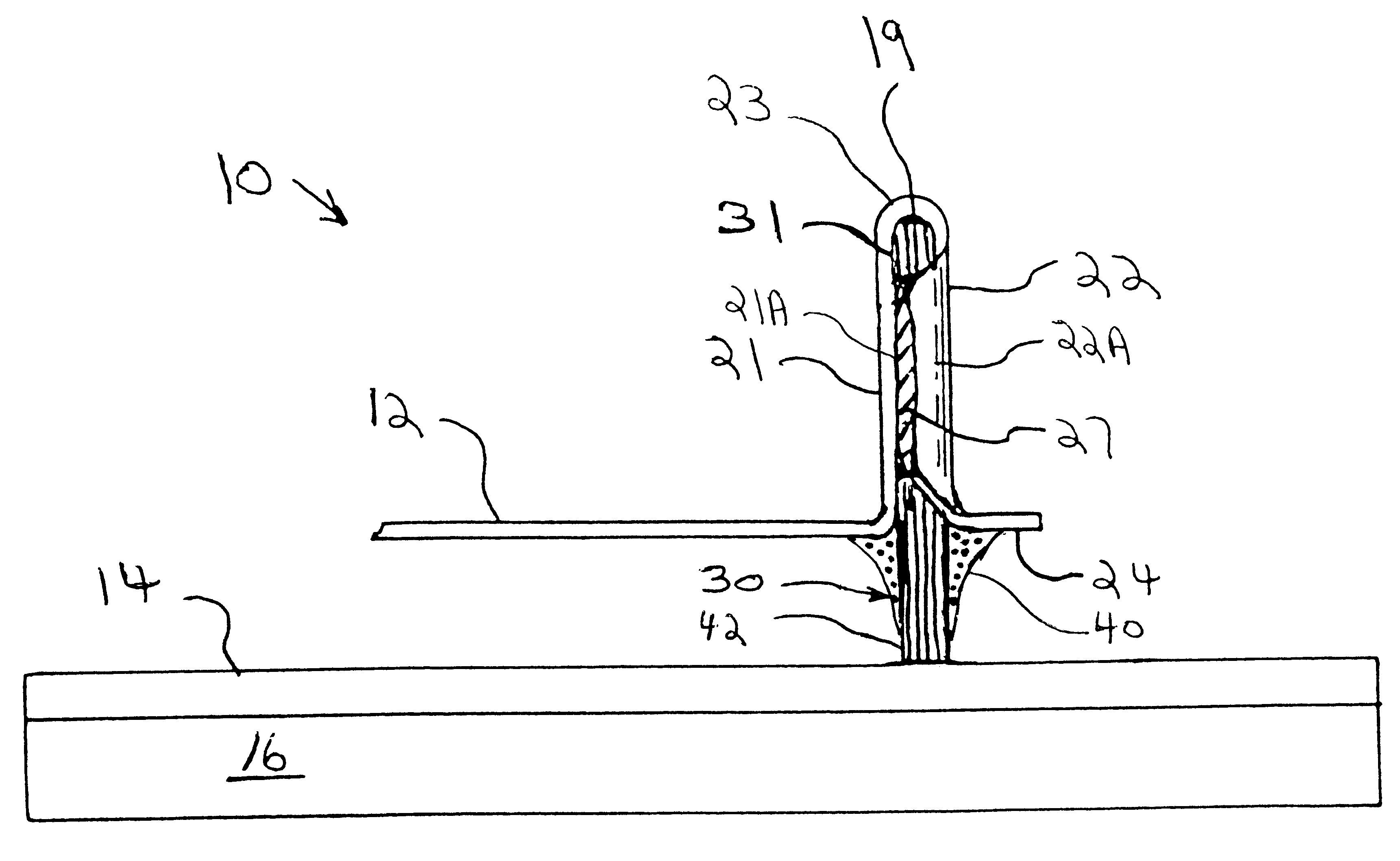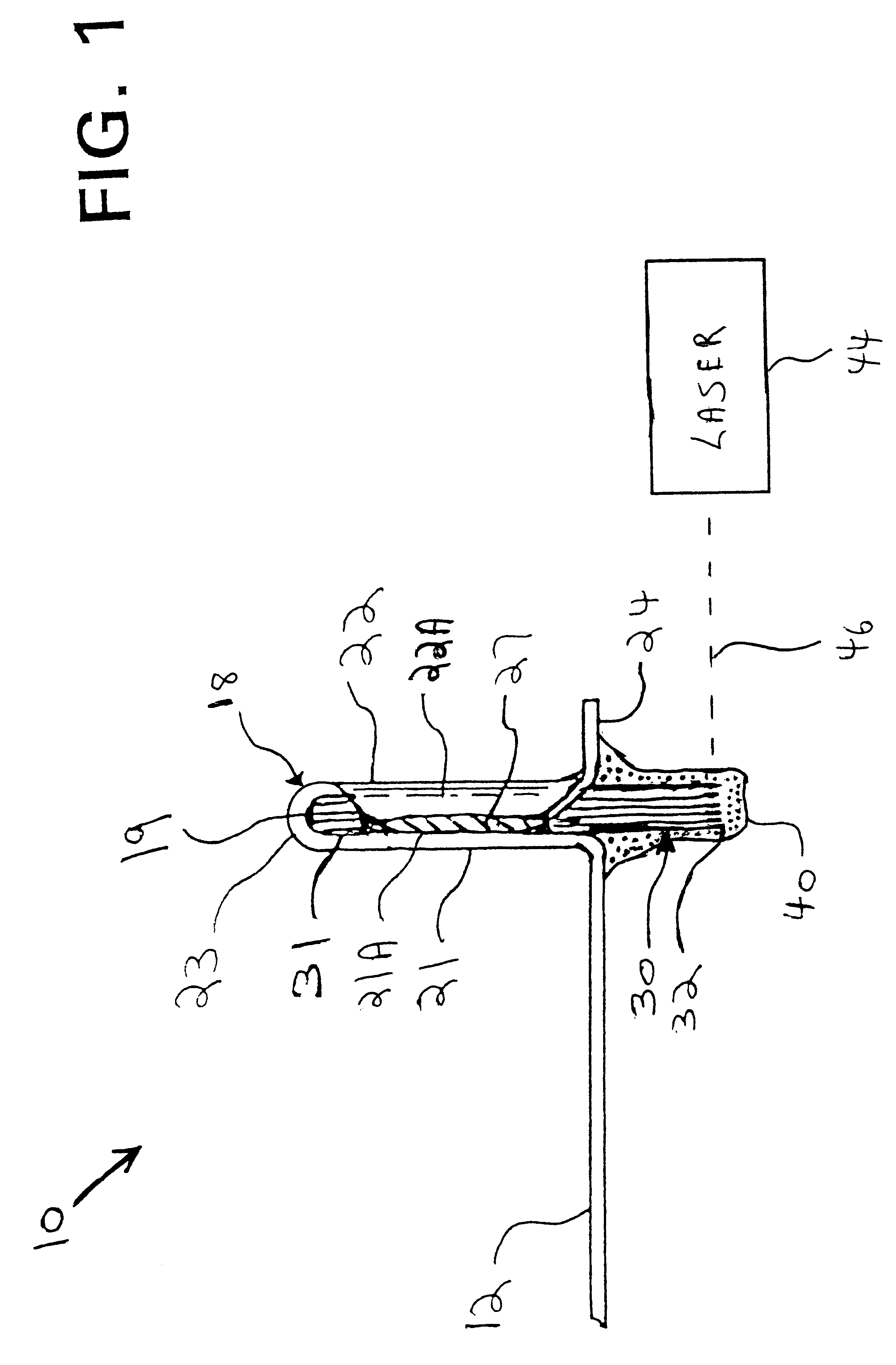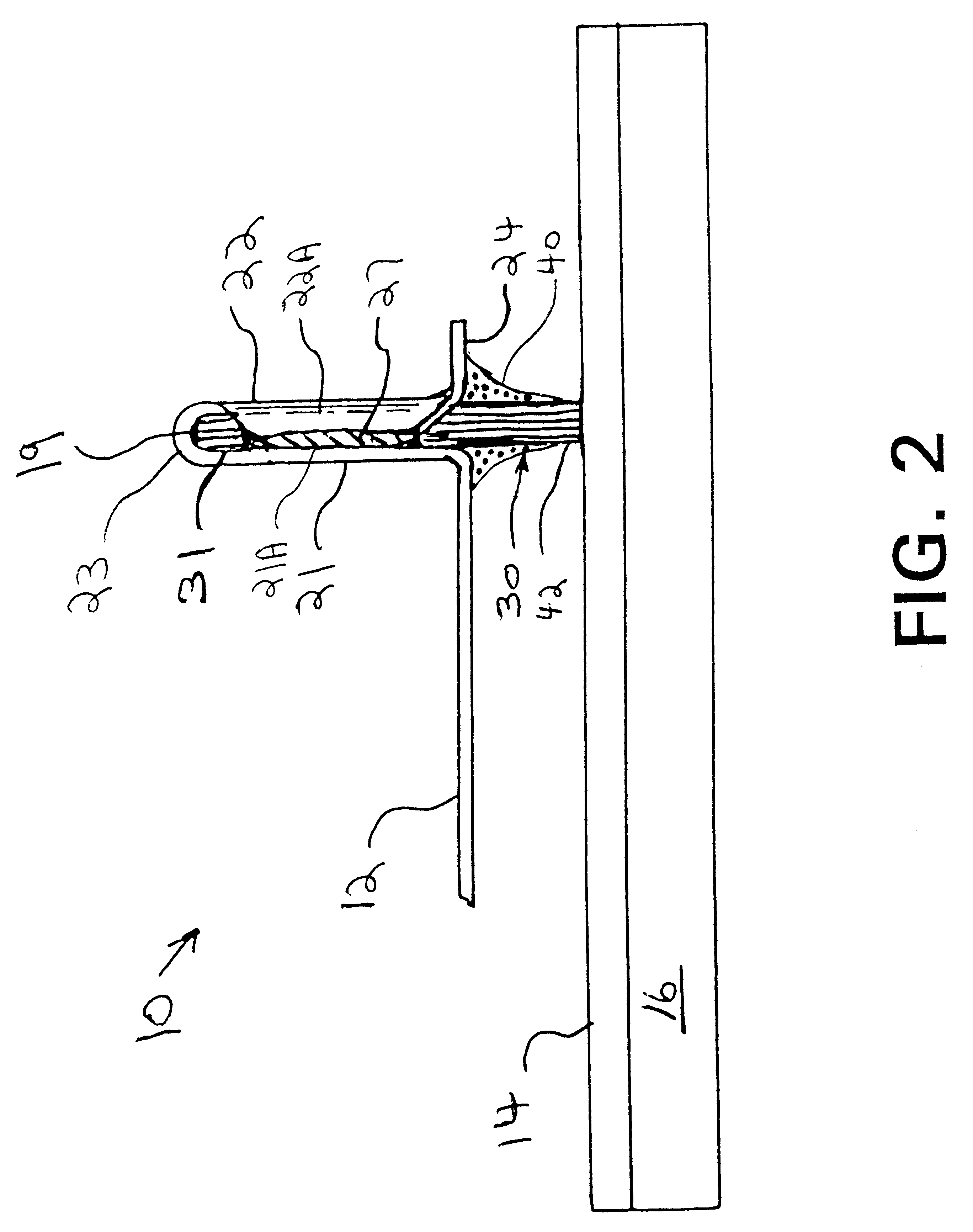Carbon fiber contactor having an elastomer to reduce hysteresis
a carbon fiber contactor and elastomer technology, applied in the field of electric contactors, can solve the problems of prior art failure of resistance reading or generating erroneous resistance reading, element material can be removed from the element,
- Summary
- Abstract
- Description
- Claims
- Application Information
AI Technical Summary
Problems solved by technology
Method used
Image
Examples
Embodiment Construction
Although the illustrated embodiment discusses laser trimming to form tip 42, it is contemplated to form tip 42 by polishing with a diamond wheel rotating at 120 RPM with 6 micron diamond grit.
While the invention has been taught with specific reference to these embodiments, someone skilled in the art will recognize that changes can be made in form and detail without departing from the spirit and the scope of the invention. The described embodiments are to be considered in all respects only as illustrative and not restrictive. The scope of the invention is, therefore, indicated by the appended claims rather than by the description. All changes that come within the meaning and range of equivalency of the claims are to be embraced within their scope.
PUM
| Property | Measurement | Unit |
|---|---|---|
| sliding speeds | aaaaa | aaaaa |
| diameter | aaaaa | aaaaa |
| conductive | aaaaa | aaaaa |
Abstract
Description
Claims
Application Information
 Login to View More
Login to View More - R&D
- Intellectual Property
- Life Sciences
- Materials
- Tech Scout
- Unparalleled Data Quality
- Higher Quality Content
- 60% Fewer Hallucinations
Browse by: Latest US Patents, China's latest patents, Technical Efficacy Thesaurus, Application Domain, Technology Topic, Popular Technical Reports.
© 2025 PatSnap. All rights reserved.Legal|Privacy policy|Modern Slavery Act Transparency Statement|Sitemap|About US| Contact US: help@patsnap.com



